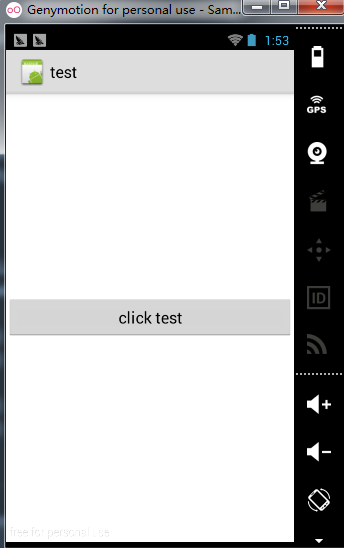編輯:關於Android編程
上一篇帶大家初步了解了EventBus的使用方式,詳見:Android EventBus實戰 沒聽過你就out了,本篇博客將解析EventBus的源碼,相信能夠讓大家深入理解該框架的實現,也能解決很多在使用中的疑問:為什麼可以這麼做?為什麼這麼做不好呢?
一般使用EventBus的組件類,類似下面這種方式:
public class SampleComponent extends Fragment
{
@Override
public void onCreate(Bundle savedInstanceState)
{
super.onCreate(savedInstanceState);
EventBus.getDefault().register(this);
}
public void onEventMainThread(param)
{
}
public void onEventPostThread(param)
{
}
public void onEventBackgroundThread(param)
{
}
public void onEventAsync(param)
{
}
@Override
public void onDestroy()
{
super.onDestroy();
EventBus.getDefault().unregister(this);
}
}
看完代碼大家或許會有一些疑問:
1、代碼中還有一些以onEvent開頭的方法,這些方法是干嘛的呢?
在回答這個問題之前,我有一個問題,你咋不問register(this)是干嘛的呢?其實register(this)就是去當前類,遍歷所有的方法,找到onEvent開頭的然後進行存儲。現在知道onEvent開頭的方法是干嘛的了吧。
2、那onEvent後面的那些MainThread應該是什麼標志吧?
嗯,是的,onEvent後面可以寫四種,也就是上面出現的四個方法,決定了當前的方法最終在什麼線程運行,怎麼運行,可以參考上一篇博客或者細細往下看。
既然register了,那麼肯定得說怎麼調用是吧。
EventBus.getDefault().post(param);
現在有沒有覺得,撇開專業術語:其實EventBus就是在內部存儲了一堆onEvent開頭的方法,然後post的時候,根據post傳入的參數,去找到匹配的方法,反射調用之。
那麼,我告訴你,它內部使用了Map進行存儲,鍵就是參數的Class類型。知道是這個類型,那麼你覺得根據post傳入的參數進行查找還是個事麼?
下面我們就去看看EventBus的register和post真面目。
EventBus.getDefault().register(this);
首先:
EventBus.getDefault()其實就是個單例,和我們傳統的getInstance一個意思:
/** Convenience singleton for apps using a process-wide EventBus instance. */
public static EventBus getDefault() {
if (defaultInstance == null) {
synchronized (EventBus.class) {
if (defaultInstance == null) {
defaultInstance = new EventBus();
}
}
}
return defaultInstance;
}
然後register應該是一個普通的方法,我們去看看:
register公布給我們使用的有4個:
public void register(Object subscriber) {
register(subscriber, DEFAULT_METHOD_NAME, false, 0);
}
public void register(Object subscriber, int priority) {
register(subscriber, DEFAULT_METHOD_NAME, false, priority);
}
public void registerSticky(Object subscriber) {
register(subscriber, DEFAULT_METHOD_NAME, true, 0);
}
public void registerSticky(Object subscriber, int priority) {
register(subscriber, DEFAULT_METHOD_NAME, true, priority);
}
private synchronized void register(Object subscriber, String methodName, boolean sticky, int priority) {
List subscriberMethods = subscriberMethodFinder.findSubscriberMethods(subscriber.getClass(),
methodName);
for (SubscriberMethod subscriberMethod : subscriberMethods) {
subscribe(subscriber, subscriberMethod, sticky, priority);
}
}
subscriber 是我們掃描類的對象,也就是我們代碼中常見的this;
methodName 這個是寫死的:“onEvent”,用於確定掃描什麼開頭的方法,可見我們的類中都是以這個開頭。
sticky 這個參數,解釋源碼的時候解釋,暫時不用管
priority 優先級,優先級越高,在調用的時候會越先調用。
下面開始看代碼:
ListsubscriberMethods = subscriberMethodFinder.findSubscriberMethods(subscriber.getClass(), methodName);
那麼不用說,肯定是去遍歷該類內部所有方法,然後根據methodName去匹配,匹配成功的封裝成SubscriberMethod,最後返回一個List。下面看代碼:
List呵,代碼還真長;不過我們直接看核心部分:findSubscriberMethods(Class subscriberClass, String eventMethodName) { String key = subscriberClass.getName() + '.' + eventMethodName; List subscriberMethods; synchronized (methodCache) { subscriberMethods = methodCache.get(key); } if (subscriberMethods != null) { return subscriberMethods; } subscriberMethods = new ArrayList (); Class clazz = subscriberClass; HashSet eventTypesFound = new HashSet (); StringBuilder methodKeyBuilder = new StringBuilder(); while (clazz != null) { String name = clazz.getName(); if (name.startsWith(java.) || name.startsWith(javax.) || name.startsWith(android.)) { // Skip system classes, this just degrades performance break; } // Starting with EventBus 2.2 we enforced methods to be public (might change with annotations again) Method[] methods = clazz.getMethods(); for (Method method : methods) { String methodName = method.getName(); if (methodName.startsWith(eventMethodName)) { int modifiers = method.getModifiers(); if ((modifiers & Modifier.PUBLIC) != 0 && (modifiers & MODIFIERS_IGNORE) == 0) { Class[] parameterTypes = method.getParameterTypes(); if (parameterTypes.length == 1) { String modifierString = methodName.substring(eventMethodName.length()); ThreadMode threadMode; if (modifierString.length() == 0) { threadMode = ThreadMode.PostThread; } else if (modifierString.equals(MainThread)) { threadMode = ThreadMode.MainThread; } else if (modifierString.equals(BackgroundThread)) { threadMode = ThreadMode.BackgroundThread; } else if (modifierString.equals(Async)) { threadMode = ThreadMode.Async; } else { if (skipMethodVerificationForClasses.containsKey(clazz)) { continue; } else { throw new EventBusException(Illegal onEvent method, check for typos: + method); } } Class eventType = parameterTypes[0]; methodKeyBuilder.setLength(0); methodKeyBuilder.append(methodName); methodKeyBuilder.append('>').append(eventType.getName()); String methodKey = methodKeyBuilder.toString(); if (eventTypesFound.add(methodKey)) { // Only add if not already found in a sub class subscriberMethods.add(new SubscriberMethod(method, threadMode, eventType)); } } } else if (!skipMethodVerificationForClasses.containsKey(clazz)) { Log.d(EventBus.TAG, Skipping method (not public, static or abstract): + clazz + . + methodName); } } } clazz = clazz.getSuperclass(); } if (subscriberMethods.isEmpty()) { throw new EventBusException(Subscriber + subscriberClass + has no public methods called + eventMethodName); } else { synchronized (methodCache) { methodCache.put(key, subscriberMethods); } return subscriberMethods; } }
22行:看到沒,clazz.getMethods();去得到所有的方法:
23-62行:就開始遍歷每一個方法了,去匹配封裝了。
25-29行:分別判斷了是否以onEvent開頭,是否是public且非static和abstract方法,是否是一個參數。如果都復合,才進入封裝的部分。
32-45行:也比較簡單,根據方法的後綴,來確定threadMode,threadMode是個枚舉類型:就四種情況。
最後在54行:將method, threadMode, eventType傳入構造了:new SubscriberMethod(method, threadMode, eventType)。添加到List,最終放回。
注意下63行:clazz = clazz.getSuperclass();可以看到,會掃描所有的父類,不僅僅是當前類。
繼續回到register:
for (SubscriberMethod subscriberMethod : subscriberMethods) {
subscribe(subscriber, subscriberMethod, sticky, priority);
}
// Must be called in synchronized block
private void subscribe(Object subscriber, SubscriberMethod subscriberMethod, boolean sticky, int priority) {
subscribed = true;
Class eventType = subscriberMethod.eventType;
CopyOnWriteArrayList subscriptions = subscriptionsByEventType.get(eventType);
Subscription newSubscription = new Subscription(subscriber, subscriberMethod, priority);
if (subscriptions == null) {
subscriptions = new CopyOnWriteArrayList();
subscriptionsByEventType.put(eventType, subscriptions);
} else {
for (Subscription subscription : subscriptions) {
if (subscription.equals(newSubscription)) {
throw new EventBusException(Subscriber + subscriber.getClass() + already registered to event
+ eventType);
}
}
}
// Starting with EventBus 2.2 we enforced methods to be public (might change with annotations again)
// subscriberMethod.method.setAccessible(true);
int size = subscriptions.size();
for (int i = 0; i <= size; i++) {
if (i == size || newSubscription.priority > subscriptions.get(i).priority) {
subscriptions.add(i, newSubscription);
break;
}
}
List> subscribedEvents = typesBySubscriber.get(subscriber);
if (subscribedEvents == null) {
subscribedEvents = new ArrayList>();
typesBySubscriber.put(subscriber, subscribedEvents);
}
subscribedEvents.add(eventType);
if (sticky) {
Object stickyEvent;
synchronized (stickyEvents) {
stickyEvent = stickyEvents.get(eventType);
}
if (stickyEvent != null) {
// If the subscriber is trying to abort the event, it will fail (event is not tracked in posting state)
// --> Strange corner case, which we don't take care of here.
postToSubscription(newSubscription, stickyEvent, Looper.getMainLooper() == Looper.myLooper());
}
}
}
我們的subscriberMethod中保存了method, threadMode, eventType,上面已經說了;
4-17行:根據subscriberMethod.eventType,去subscriptionsByEventType去查找一個CopyOnWriteArrayList
順便把我們的傳入的參數封裝成了一個:Subscription(subscriber, subscriberMethod, priority);
這裡的subscriptionsByEventType是個Map,key:eventType ; value:CopyOnWriteArrayList
22-28行:實際上,就是添加newSubscription;並且是按照優先級添加的。可以看到,優先級越高,會插到在當前List的前面。
30-35行:根據subscriber存儲它所有的eventType ; 依然是map;key:subscriber ,value:List
37-47行:判斷sticky;如果為true,從stickyEvents中根據eventType去查找有沒有stickyEvent,如果有則立即發布去執行。stickyEvent其實就是我們post時的參數。
postToSubscription這個方法,我們在post的時候會介紹。
到此,我們register就介紹完了。
你只要記得一件事:掃描了所有的方法,把匹配的方法最終保存在subscriptionsByEventType(Map,key:eventType ; value:CopyOnWriteArrayList
eventType是我們方法參數的Class,Subscription中則保存著subscriber, subscriberMethod(method, threadMode, eventType), priority;包含了執行改方法所需的一切。
register完畢,知道了EventBus如何存儲我們的方法了,下面看看post它又是如何調用我們的方法的。
再看源碼之前,我們猜測下:register時,把方法存在subscriptionsByEventType;那麼post肯定會去subscriptionsByEventType去取方法,然後調用。
下面看源碼:
/** Posts the given event to the event bus. */
public void post(Object event) {
PostingThreadState postingState = currentPostingThreadState.get();
List
currentPostingThreadState是一個ThreadLocal類型的,裡面存儲了PostingThreadState;PostingThreadState包含了一個eventQueue和一些標志位。
private final ThreadLocalcurrentPostingThreadState = new ThreadLocal () { @Override protected PostingThreadState initialValue() { return new PostingThreadState(); } }
把我們傳入的event,保存到了當前線程中的一個變量PostingThreadState的eventQueue中。
10行:判斷當前是否是UI線程。
16-18行:遍歷隊列中的所有的event,調用postSingleEvent(eventQueue.remove(0), postingState)方法。
這裡大家會不會有疑問,每次post都會去調用整個隊列麼,那麼不會造成方法多次調用麼?
可以看到第7-8行,有個判斷,就是防止該問題的,isPosting=true了,就不會往下走了。
下面看postSingleEvent
private void postSingleEvent(Object event, PostingThreadState postingState) throws Error {
Class eventClass = event.getClass();
List> eventTypes = findEventTypes(eventClass);
boolean subscriptionFound = false;
int countTypes = eventTypes.size();
for (int h = 0; h < countTypes; h++) {
Class clazz = eventTypes.get(h);
CopyOnWriteArrayList subscriptions;
synchronized (this) {
subscriptions = subscriptionsByEventType.get(clazz);
}
if (subscriptions != null && !subscriptions.isEmpty()) {
for (Subscription subscription : subscriptions) {
postingState.event = event;
postingState.subscription = subscription;
boolean aborted = false;
try {
postToSubscription(subscription, event, postingState.isMainThread);
aborted = postingState.canceled;
} finally {
postingState.event = null;
postingState.subscription = null;
postingState.canceled = false;
}
if (aborted) {
break;
}
}
subscriptionFound = true;
}
}
if (!subscriptionFound) {
Log.d(TAG, No subscribers registered for event + eventClass);
if (eventClass != NoSubscriberEvent.class && eventClass != SubscriberExceptionEvent.class) {
post(new NoSubscriberEvent(this, event));
}
}
}
2-3行:根據event的Class,去得到一個List
6-31行:遍歷所有的Class,到subscriptionsByEventType去查找subscriptions;哈哈,熟不熟悉,還記得我們register裡面把方法存哪了不?
是不是就是這個Map;
12-30行:遍歷每個subscription,依次去調用postToSubscription(subscription, event, postingState.isMainThread);
這個方法就是去反射執行方法了,大家還記得在register,if(sticky)時,也會去執行這個方法。
下面看它如何反射執行:
private void postToSubscription(Subscription subscription, Object event, boolean isMainThread) {
switch (subscription.subscriberMethod.threadMode) {
case PostThread:
invokeSubscriber(subscription, event);
break;
case MainThread:
if (isMainThread) {
invokeSubscriber(subscription, event);
} else {
mainThreadPoster.enqueue(subscription, event);
}
break;
case BackgroundThread:
if (isMainThread) {
backgroundPoster.enqueue(subscription, event);
} else {
invokeSubscriber(subscription, event);
}
break;
case Async:
asyncPoster.enqueue(subscription, event);
break;
default:
throw new IllegalStateException(Unknown thread mode: + subscription.subscriberMethod.threadMode);
}
}
前面已經說過subscription包含了所有執行需要的東西,大致有:subscriber, subscriberMethod(method, threadMode, eventType), priority;
那麼這個方法:第一步根據threadMode去判斷應該在哪個線程去執行該方法;
case PostThread:
void invokeSubscriber(Subscription subscription, Object event) throws Error {
subscription.subscriberMethod.method.invoke(subscription.subscriber, event);
}
case MainThread:
首先去判斷當前如果是UI線程,則直接調用;否則: mainThreadPoster.enqueue(subscription, event);把當前的方法加入到隊列,然後直接通過handler去發送一個消息,在handler的handleMessage中,去執行我們的方法。說白了就是通過Handler去發送消息,然後執行的。
case BackgroundThread:
如果當前非UI線程,則直接調用;如果是UI線程,則將任務加入到後台的一個隊列,最終由Eventbus中的一個線程池去調用
executorService = Executors.newCachedThreadPool();。
case Async:將任務加入到後台的一個隊列,最終由Eventbus中的一個線程池去調用;線程池與BackgroundThread用的是同一個。
這麼說BackgroundThread和Async有什麼區別呢?
BackgroundThread中的任務,一個接著一個去調用,中間使用了一個布爾型變量handlerActive進行的控制。
Async則會動態控制並發。
到此,我們完整的源碼分析就結束了,總結一下:register會把當前類中匹配的方法,存入一個map,而post會根據實參去map查找進行反射調用。分析這麼久,一句話就說完了~~
其實不用發布者,訂閱者,事件,總線這幾個詞或許更好理解,以後大家問了EventBus,可以說,就是在一個單例內部維持著一個map對象存儲了一堆的方法;post無非就是根據參數去查找方法,進行反射調用。
介紹了register和post;大家獲取還能想到一個詞sticky,在register中,如何sticky為true,會去stickyEvents去查找事件,然後立即去post;
那麼這個stickyEvents何時進行保存事件呢?
其實evevntbus中,除了post發布事件,還有一個方法也可以:
public void postSticky(Object event) {
synchronized (stickyEvents) {
stickyEvents.put(event.getClass(), event);
}
// Should be posted after it is putted, in case the subscriber wants to remove immediately
post(event);
}
大家再去看看EventBus中所有的public方法,無非都是一些狀態判斷,獲取事件,移除事件的方法;沒什麼好介紹的,基本見名知意。
好了,到此我們的源碼解析就結束了,希望大家不僅能夠了解這些優秀框架的內部機理,更能夠體會到這些框架的很多細節之處,並發的處理,很多地方,為什麼它這麼做等等。
我建了一個QQ群,方便大家交流。群號:55032675
----------------------------------------------------------------------------------------------------------
博主部分視頻已經上線,如果你不喜歡枯燥的文本,請猛戳(初錄,期待您的支持):
1、高仿微信5.2.1主界面及消息提醒
2、高仿QQ5.0側滑
3、Android智能機器人“小慕”的實現
 Android開發之使用ViewPager做引導頁面
Android開發之使用ViewPager做引導頁面
引導頁面相信大家都不會陌生,安裝了一個新的App後第一次打開,都會有類似下圖,相當於說明文檔 實現效果 程序目錄結構 在主layout裡main.
 Android開發之WebView知識和常見問題
Android開發之WebView知識和常見問題
一、前言最近在學習HTML5相關的知識,發現前端技術的功能越來越強大了,很多功能如果我們通過原生代碼的形式進行實現的話相對於H5會花費數倍的時間,在最求快速迭代的時候是不
 Android View觸摸屏事件派發機制詳解與源碼分析
Android View觸摸屏事件派發機制詳解與源碼分析
PS一句:最終還是選擇CSDN來整理發表這幾年的知識點,該文章平行遷移到CSDN。因為CSDN也支持MarkDown語法了,牛逼啊! 1 背景最近在簡書和微博還
 Android程序開發之給背景圖加上移動的手勢
Android程序開發之給背景圖加上移動的手勢
一,工程圖。二,效果圖。三,代碼。RootViewController.h#import <UIKit/UIKit.h>@interface RootView